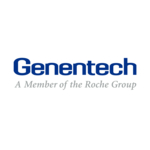– Tecentriq Hybreza provides patients and physicians with greater flexibility of treatment options while showing safety and efficacy consistent with intravenous (IV) Tecentriq –
– New subcutaneous (SC) option reduces treatment time to approximately 7 minutes, compared with 30-60 minutes for IV infusion –
SOUTH SAN FRANCISCO, Calif.--(BUSINESS WIRE)--Genentech, a member of the Roche Group (SIX: RO, ROG; OTCQX: RHHBY), announced today that the U.S. Food and Drug Administration (FDA) has approved Tecentriq Hybreza™ (atezolizumab and hyaluronidase-tqjs), the first and only PD-(L)1 inhibitor for subcutaneous (SC), under the skin injection for patients in the United States. Tecentriq Hybreza can be injected subcutaneously over approximately seven minutes, compared with 30-60 minutes for standard IV infusion of Tecentriq (atezolizumab). It will be available for all IV indications of Tecentriq approved for adults in the U.S., including certain types of lung, liver, skin and soft tissue cancer.
“By enabling subcutaneous administration for a cancer immunotherapy, Tecentriq Hybreza now offers patients with multiple cancer types and their physicians greater flexibility and choice of treatment administration,” said Levi Garraway, M.D., Ph.D., chief medical officer and head of Global Product Development. “We are pleased to introduce this new subcutaneous formulation that builds on the established safety and efficacy profile of intravenous Tecentriq and can treat patients faster and in more accessible settings.”
“This approval represents a significant option to improve the patient experience,” said Ann Fish-Steagall, RN, senior vice president of Patient Services at the LUNGevity Foundation. “When patients have options, they feel empowered to be vital participants in their own care and choose their preferred treatment option.”
The FDA approval is based on pivotal data from the Phase IB/III IMscin001 study, which showed comparable levels of Tecentriq in the blood, when administered subcutaneously, and a safety and efficacy profile consistent with the IV formulation. The Phase II IMscin002 study showed that 71% of patients preferred Tecentriq Hybreza over intravenous atezolizumab, and the most common reasons were less time in the clinic, increased comfort during treatment and reduced emotional distress. 4 out of 5 patients (79%) chose Tecentriq Hybreza to continue their treatment, after experiencing both formulations.
Developing new formulations of our medicines is part of our commitment to improve the patient experience and support people living with different illnesses at every step of their treatment journey. With Tecentriq Hybreza and Roche/Genentech’s 13 other subcutaneous therapies – available across various diseases – we offer additional administration options to meet the diverse preferences of patients.
The subcutaneous formulation of Tecentriq received its first worldwide approval in Great Britain in August 2023 and is now approved in over 50 countries (outside the U.S. marketed as Tecentriq SC). Regulatory reviews in other countries and regions are ongoing.
Genentech is committed to helping people access the medicines they are prescribed and offers comprehensive services for people prescribed Tecentriq Hybreza to help minimize barriers to access and reimbursement. For people who qualify, Genentech offers patient assistance programs through Genentech Access Solutions. More information is also available at 866-4ACCESS/866-422-2377 or http://www.Genentech-Access.com.
Visit https://www.tecentriq.com/hybreza.html for additional information.
About the IMscin001 study
IMscin001 is a Phase IB/III, global, multicenter, randomized study evaluating the pharmacokinetics, safety and efficacy of Tecentriq Hybreza, compared with IV Tecentriq, in patients with previously treated locally advanced or metastatic non-small cell lung cancer (NSCLC) for whom prior platinum therapy has failed. The study enrolled 371 patients. The study met its primary endpoints, demonstrating comparable levels of Tecentriq in the blood during a given dosing interval on the basis of established pharmacokinetic measurements; observed serum Ctrough and model-predicted area under the curve. Observed efficacy, as measured by the overall response rate, progression-free survival, overall survival and duration of response, was similar between the SC and IV treatment arms and consistent with the known profile of IV Tecentriq. The safety profile of Tecentriq Hybreza was also consistent with that of IV Tecentriq.
About the IMscin002 study
IMscin002 is a Phase II, global crossover study evaluating patient preference between the SC and IV formulations of Tecentriq. The study enrolled 179 patients, including people with PD-L1-positive resected Stage II-IIIB NSCLC who have completed adjuvant platinum-based chemotherapy without evidence of disease recurrence, and untreated patients with PD-L1-high Stage IV NSCLC. The study met its primary endpoint, showing that 71% of participants preferred the SC formulation (21% preferred IV and 8% stated no preference); 79% opted for Tecentriq Hybreza to complete their treatment, after experiencing both formulations of Tecentriq. The study confirmed that switching between Tecentriq Hybreza and IV Tecentriq was well tolerated, with no new safety signals.
About Tecentriq Hybreza
Tecentriq Hybreza combines Tecentriq with Halozyme Therapeutics’ Enhanze® drug delivery technology.
Tecentriq is a monoclonal antibody designed to bind with a protein called PD-L1. Tecentriq is designed to bind to PD-L1 expressed on tumor cells and tumor-infiltrating immune cells, blocking its interactions with both PD-1 and B7.1 receptors. By inhibiting PD-L1, Tecentriq may enable the re-activation of T cells. Tecentriq may also affect normal cells.
The Enhanze drug delivery technology is based on a proprietary recombinant human hyaluronidase PH20 (rHuPH20), an enzyme that locally and temporarily degrades hyaluronan – a glycosaminoglycan or chain of natural sugars in the body – in the subcutaneous space. This increases the permeability of the tissue under the skin, allowing space for Tecentriq to enter, enabling it to be rapidly dispersed and absorbed into the bloodstream.
Tecentriq is approved for some of the most aggressive and difficult-to-treat forms of cancer. Tecentriq was the first cancer immunotherapy approved for the treatment of a certain type of early-stage (adjuvant) NSCLC, small cell lung cancer (SCLC) and hepatocellular carcinoma (HCC). Tecentriq is also approved in countries around the world, either alone or in combination with targeted therapies and/or chemotherapies, for various forms of metastatic NSCLC, certain types of metastatic urothelial cancer (mUC), PD-L1-positive metastatic triple-negative breast cancer (TNBC), BRAF V600 mutation-positive advanced melanoma and alveolar soft part sarcoma (ASPS). In addition to intravenous infusion, Tecentriq has been approved as a subcutaneous formulation in over 50 countries (outside the U.S. marketed as Tecentriq SC). The approved indications for Tecentriq Hybreza and Tecentriq SC mirror those of IV Tecentriq.
What is Tecentriq Hybreza?
Tecentriq Hybreza is a prescription medicine used to treat:
Adults with a type of lung cancer called non-small cell lung cancer (NSCLC).
- Tecentriq Hybreza may be used alone as a treatment for their lung cancer:
- to help prevent their lung cancer from coming back after their tumor(s) has been removed by surgery and they have received platinum-based chemotherapy, and
- they have stage 2 to 3A NSCLC (patients should talk to their healthcare provider about what these stages mean), and
- their cancer tests positive for “PD-L1”.
- Tecentriq Hybreza may be used alone as their first treatment when their lung cancer:
- has spread or grown, and
- their cancer tests positive for “high PD-L1”, and
- their tumor does not have an abnormal “EGFR” or “ALK” gene.
- Tecentriq Hybreza may be used with the medicines bevacizumab, paclitaxel, and carboplatin as their first treatment when their lung cancer:
- has spread or grown, and
- is a type called “non-squamous NSCLC,” and
- their tumor does not have an abnormal “EGFR” or “ALK” gene.
- Tecentriq Hybreza may be used with the medicines paclitaxel protein-bound and carboplatin as their first treatment when their lung cancer:
- has spread or grown, and
- is a type called “non-squamous NSCLC,” and
- their tumor does not have an abnormal “EGFR” or “ALK” gene.
- Tecentriq Hybreza may be used alone when their lung cancer:
- has spread or grown, and
- if they have tried chemotherapy that contains platinum, and it did not work or is no longer working.
- if their tumor has an abnormal “EGFR” or “ALK” gene, they should have also tried an FDA-approved therapy for tumors with these abnormal genes, and it did not work or is no longer working.
Adults with a type of lung cancer called small cell lung cancer (SCLC). Tecentriq Hybreza may be used with the chemotherapy medicines carboplatin and etoposide as their first treatment when their lung cancer:
- is a type called “extensive-stage small cell lung cancer,” which means that it has spread or grown.
Adults with a type of liver cancer called hepatocellular carcinoma (HCC). Tecentriq Hybreza may be used with the medicine bevacizumab when their liver cancer:
- has spread or cannot be removed by surgery, and
- they have not received other medicines by mouth or injection through their vein (IV) to treat their cancer.
Adults with a type of skin cancer called melanoma. Tecentriq Hybreza may be used with the medicines cobimetinib and vemurafenib in patients with melanoma when their skin cancer:
- has spread to other parts of the body or cannot be removed by surgery, and
- has a certain type of abnormal “BRAF” gene. Healthcare providers will perform a test to make sure this Tecentriq Hybreza combination is right for the patient.
Adults with a type of soft tissue tumor (cancer) called alveolar soft part sarcoma (ASPS). Tecentriq Hybreza may be used when their sarcoma:
- has spread to other parts of the body or cannot be removed by surgery.
It is not known if Tecentriq Hybreza is safe and effective in children.
Important Safety Information
Who should not receive TECENTRIQ HYBREZA?
Patients should not receive TECENTRIQ HYBREZA if they are allergic to hyaluronidase or any of the ingredients in TECENTRIQ HYBREZA.
What is the most important information about Tecentriq Hybreza?
Tecentriq Hybreza can cause the immune system to attack normal organs and tissues in any area of the body and can affect the way they work. These problems can sometimes become severe or life threatening and can lead to death. Patients can have more than one of these problems at the same time. These problems may happen anytime during their treatment or even after their treatment has ended.
Patients should call or see their healthcare provider right away if they develop any new or worse signs or symptoms, including:
Lung problems
- cough
- shortness of breath
- chest pain
Intestinal problems
- diarrhea (loose stools) or more frequent bowel movements than usual
- stools that are black, tarry, sticky, or have blood or mucus
- severe stomach-area (abdomen) pain or tenderness
Liver problems
- yellowing of the skin or the whites of the eyes
- severe nausea or vomiting
- pain on the right side of their stomach area (abdomen)
- dark urine (tea colored)
- bleeding or bruising more easily than normal
Hormone gland problems
- headaches that will not go away or unusual headaches
- eye sensitivity to light
- eye problems
- rapid heartbeat
- increased sweating
- extreme tiredness
- weight gain or weight loss
- feeling more hungry or thirsty than usual
- urinating more often than usual
- hair loss
- feeling cold
- constipation
- their voice gets deeper
- dizziness or fainting
- changes in mood or behavior, such as decreased sex drive, irritability, or forgetfulness
Kidney problems
- decrease in their amount of urine
- blood in their urine
- swelling of their ankles
- loss of appetite
Skin problems
- rash
- itching
- skin blistering or peeling
- painful sores or ulcers in mouth or nose, throat, or genital area
- fever or flu-like symptoms
- swollen lymph nodes
Problems can also happen in other organs.
These are not all of the signs and symptoms of immune system problems that can happen with Tecentriq Hybreza. Patients should call or see their healthcare provider right away for any new or worse signs or symptoms, including:
- Chest pain, irregular heartbeat, shortness of breath, or swelling of ankles
- Confusion, sleepiness, memory problems, changes in mood or behavior, stiff neck, balance problems, tingling or numbness of the arms or legs
- Double vision, blurry vision, sensitivity to light, eye pain, changes in eyesight
- Persistent or severe muscle pain or weakness, muscle cramps
- Low red blood cells, bruising
Infusion reactions that can sometimes be severe or life-threatening. Signs and symptoms of infusion reactions may include:
- chills or shaking
- itching or rash
- flushing
- shortness of breath or wheezing
- dizziness
- feeling like passing out
- fever
- back or neck pain
Complications, including graft-versus-host disease (GVHD), in people who have received a bone marrow (stem cell) transplant that uses donor stem cells (allogeneic). These complications can be serious and can lead to death. These complications may happen if patients undergo transplantation either before or after being treated with Tecentriq Hybreza. A healthcare provider will monitor for these complications.
Getting medical treatment right away may help keep these problems from becoming more serious. A healthcare provider will check patients for these problems during their treatment with Tecentriq Hybreza. A healthcare provider may treat patients with corticosteroid or hormone replacement medicines. A healthcare provider may also need to delay or completely stop treatment with Tecentriq Hybreza if patients have severe side effects.
Before receiving Tecentriq Hybreza, patients should tell their healthcare provider about all of their medical conditions, including if they:
- have immune system problems such as Crohn’s disease, ulcerative colitis, or lupus
- have received an organ transplant
- have received or plan to receive a stem cell transplant that uses donor stem cells (allogeneic)
- have received radiation treatment to their chest area
- have a condition that affects their nervous system, such as myasthenia gravis or Guillain-Barré syndrome
- are pregnant or plan to become pregnant. Tecentriq Hybreza can harm an unborn baby. Patients should tell their healthcare provider right away if they become pregnant or think they may be pregnant during treatment with Tecentriq Hybreza. Females who are able to become pregnant:
- A healthcare provider should do a pregnancy test before they start treatment with Tecentriq Hybreza
- They should use an effective method of birth control during their treatment and for at least 5 months after the last dose of Tecentriq Hybreza
- are breastfeeding or plan to breastfeed. It is not known if Tecentriq Hybreza passes into the breast milk. Patients should not breastfeed during treatment and for at least 5 months after the last dose of Tecentriq Hybreza
Patients should tell their healthcare provider about all the medicines they take, including prescription and over-the-counter medicines, vitamins, and herbal supplements.
The most common side effects of Tecentriq Hybreza when used alone include:
- feeling tired or weak
- decreased appetite
- nausea
- cough
- shortness of breath
The most common side effects observed with TECENTRIQ and may be experienced with TECENTRIQ HYBREZA are shown below
The most common side effects of TECENTRIQ when used alone as the first treatment for NSCLC include:
- feeling tired or weak
The most common side effects of TECENTRIQ when used alone in NSCLC that has spread or grown include:
- feeling tired or weak
- cough
- decreased appetite
- shortness of breath
- muscle or bone pain
The most common side effects of TECENTRIQ when used in NSCLC with bevacizumab, paclitaxel, and carboplatin include:
- numbness, pain, tingling, or burning in your hands or feet
- feeling tired or weak
- hair loss
- muscle or bone pain
- nausea
- diarrhea
- constipation
- decreased appetite
- joint pain
- high blood pressure
- rash
- cough
The most common side effects of TECENTRIQ when used in non-squamous NSCLC with paclitaxel protein-bound and carboplatin include:
- feeling tired or weak
- nausea
- diarrhea
- muscle or bone pain
- constipation
- numbness, pain, tingling, or burning in your hands or feet
- hair loss
- shortness of breath
- decreased appetite
- cough
- vomiting
- rash
The most common side effects of TECENTRIQ when used in SCLC with carboplatin and etoposide include:
- feeling tired or weak
- nausea
- hair loss
- decreased appetite
- constipation
- vomiting
The most common side effects of TECENTRIQ when used in HCC with bevacizumab include:
- high blood pressure
- feeling tired or weak
- too much protein in the urine
The most common side effects of TECENTRIQ when used in melanoma with cobimetinib and vemurafenib include:
- skin rash
- joint, muscle, or bone pain
- feeling tired or weak
- liver injury
- fever
- nausea
- itching
- swelling of legs or arms
- mouth swelling (sometimes with sores)
- low thyroid hormone levels
- sunburn or sun sensitivity
The most common side effects of TECENTRIQ when used alone in ASPS include:
- muscle or bone pain
- feeling tired or weak
- rash
- cough
- headache
- nausea
- high blood pressure
- vomiting
- constipation
- shortness of breath
- dizziness
- bleeding
- diarrhea
- trouble sleeping
- stomach-area (abdominal) pain
- low thyroid hormone levels
- fever
- anxiety
- irregular heartbeat (arrhythmia)
- decreased appetite
Tecentriq Hybreza may cause fertility problems in females, which may affect the ability to have children. Patients should talk to their healthcare provider if they have concerns about fertility.
These are not all the possible side effects of Tecentriq Hybreza. Patients should ask their healthcare provider or pharmacist for more information about the benefits and side effects of Tecentriq Hybreza.
Report side effects to the FDA at 1-800-FDA-1088 or http://www.fda.gov/medwatch.
Report side effects to Genentech at 1-888-835-2555.
Please see http://www.Tecentriq.com/tecentriq-hybreza.html for full Prescribing Information and additional Important Safety Information.
About Genentech in lung cancer
Lung cancer is a major area of focus and investment for Genentech, and we are committed to developing new approaches, medicines and tests that can help people with this deadly disease. Our goal is to provide an effective treatment option for every person diagnosed with lung cancer. We currently have six approved medicines to treat certain kinds of lung cancer and more than 10 medicines being developed to target the most common genetic drivers of lung cancer or to boost the immune system to combat the disease. Genentech is committed to improving treatment of early-stage lung cancers to help increase the chance of cure for more people.
About Genentech
Founded more than 40 years ago, Genentech is a leading biotechnology company that discovers, develops, manufactures and commercializes medicines to treat patients with serious and life-threatening medical conditions. The company, a member of the Roche Group, has headquarters in South San Francisco, California. For additional information about the company, please visit http://www.gene.com.
Contacts
Media Contact:
Kendall Tich (650) 467-6800
Advocacy Contact:
Meg Harrison (617) 694-7060
Investor Contacts:
Loren Kalm (650) 225-3217
Bruno Eschli +41616875284






